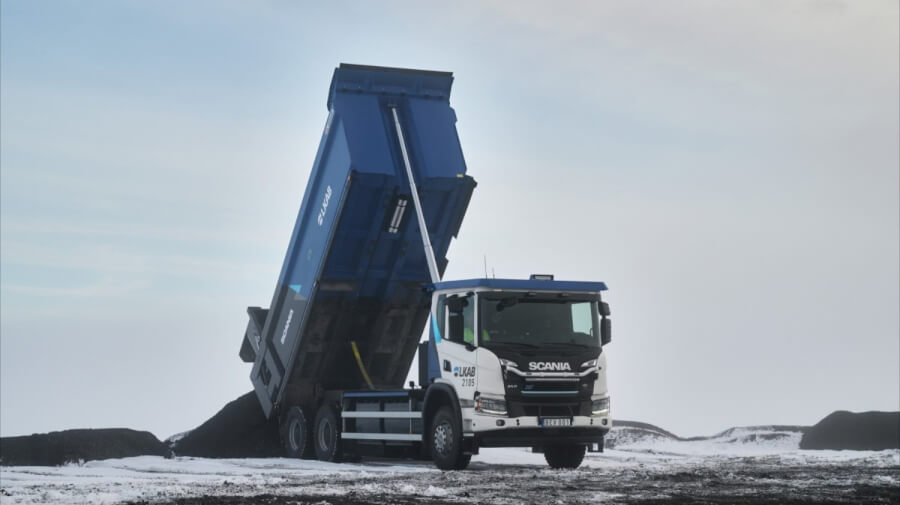The European transport industry is moving briskly towards electrification, but skeptics often question the prospects of electric car batteries. One of the questions that comes up very often is – what will be done with batteries when they have served their time in cars? But now we can breathe a sigh of relief – they will certainly not be simply thrown away.
There are two paths to this. Some manufacturers are developing recycling technologies and schemes, while others are finding a new use for electric car batteries – energy storage. In this case, they will supply electricity to houses, take care of the continuity of the energy supply of buildings and even provide electricity for music concerts.
Where do electric car batteries go?
The disposal scheme for internal combustion engines is well known: recyclable materials are collected and the metal is compressed. Then its sheets travel further and become some other useful metal product. However, it is a little different with electric cars. Their batteries cannot be thrown away or crushed. Lithium-ion batteries contain materials that are hazardous to the environment, so they should not be simply disposed of in landfills. However, it is quite difficult to destroy and recycle them.
European industry has been trying for many years to find ways to recycle used batteries and give them a second life in new cars. The first Hydrovolt factory operates in Norway, which extracts copper, aluminum, nickel, magnesium, cobalt and lithium from electric car batteries and puts them on the material market for making new batteries. However, there is a problem – the factory capacity is small, but the number of electric cars in Europe is growing very rapidly.
Lithium-ion battery manufacturing (Shutterstock photo)
Some manufacturers are turning batteries into energy storage devices. It is interesting that such trials are also taking place in the Baltic States. For example, the Lithuanian company Battec has implemented a pilot project on the reuse of batteries and created the first stationary energy batteries in the country from them.
There are other examples of this trend. Used Nissan electric car batteries are being used as a backup source of electricity for the Ajax arena of the Amsterdam football club, Renault Zoe batteries will be used in the Powervault home energy storage system.
What are dead batteries doing in the music industry?
Truck manufacturer Scania has found yet another option for reuse. In 2018, a study by the non-profit organization A Greener Festival showed that approximately 500 tons of carbon dioxide are emitted per concert. But in 2019, consultancy Hope Solutions estimated that the UK entertainment industry alone burns almost 400 million tonnes of diesel per year. Musicians often talk about ecology, but the first real works are happening only now.
Scania batteries used for concerts in a sea container (photo by manufacturer)
Scania implemented something unprecedented – its batteries serve as a source of clean energy at the concerts of the music group Lukas Graham. Danish pop group Lukas Graham’s 2022 tour was truly sustainable: it was estimated that 98.5 percent less pollutants than usual entered the environment during their concerts. This was made possible by wind power, as Lukas Graham works with Danish wind turbine manufacturer Vestas. Therefore, when performing in open-air concerts, the group uses wind energy instead of diesel generators. Of course, the sound and light equipment cannot be directly connected to the wind generators – it would be too complicated. Also, what to do if there is suddenly no wind? The solution is clean energy storage, and that’s where automakers come to the rescue.
For help, the Danes turned to their Scandinavian neighbors – Scania, which has been producing electric trucks for years. They have much larger batteries than light electric cars – towing a 40-tonne load over 300 kilometers requires serious power. In this case, we are talking about the Scania R power unit, the capacity of which reaches 468 kWh.
Electric tractor Scania 45R (manufacturer’s photo)
In addition, Scania has developed extremely fast charging that surpasses even the most modern passenger car 800 volt systems. The trucks can be charged with a power of 375 kW, and the batteries are full in 90 minutes. Extremely fast charging was necessary when the band moved from one place to another during the concert tour – the super batteries were filled in just 5 hours. By the way, this power plant and all the tour equipment was transported around Denmark by a Swedish electric truck.
Two sea containers were used to supply the concert tour with electricity, in which 72 Scania battery cells were installed. The energy capacity of each container was 1 MWh, so both together – 2 MWh. The containers were ready to provide up to 900 kW of electricity, but even the big stage did not use it fully: the average consumption was 180 kW.
The need for energy storage will only grow
As Europe and the US shift their focus to sustainable electricity, the need for energy storage will only grow. Solar, wind and hydropower plants cannot provide such a stable energy supply as, for example, nuclear plants, so the price of electricity fluctuates sharply on the stock exchange. Therefore, batteries that store excess energy and supply it when production capacity decreases will play an important role in the future, helping to avoid excessive price jumps.
Renault Omnicore batteries (Publicity photo)
According to the Clean Energy Leadership Institute, by 2030 the combined capacity of electricity storage facilities in the US and Europe will reach approximately 1,200,000,000 kWh, or 1,200 GWh. This is 15 times more than was connected to the network in 2021. For comparison, the Nissan Leaf has a battery capacity of 40 kWh, while the Scania truck has a battery capacity of 468 kWh.
Different path, same result
One of the biggest problems with batteries is the limited availability of lithium. It’s getting harder and harder to get, but the demand is growing. Most of the lithium has already been sold to battery manufacturers. Therefore, the future of electric car batteries today is energy storage.
McKinsey and Company, a global business consultancy, has estimated that most end-of-life electric car batteries still have 80% of their original capacity. It is no longer enough to cover the original distance, but it is quite enough to safely supply electricity to homes, offices, arenas or, as Scania’s example, open-air concerts.
Completely spent batteries are sent to recycling plants where useful materials are extracted from them and new batteries are made. Not only Norwegian companies, but also car manufacturers have started to take care of this. For example, Volkswagen has opened such a factory in Salzgitter, Germany, where all the battery packs that are no longer suitable for other uses end up there. It is estimated that making a 62 kWh battery from used cells saves 1.5 tons of CO2 emissions. The closed cycle would significantly reduce emissions not only in transport, but also in industry, and it currently looks a very promising direction.
If you notice an error in the article, let us know about it by highlighting the reverse text and pressing Ctrl+Enter. Thank you!
0 0 votes
Evaluation of the article
Continue Reading
2023-09-25 06:09:33
#life #electric #car #batteries #energy #houses #concert #sounding #Charged


